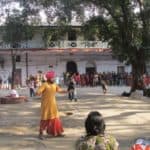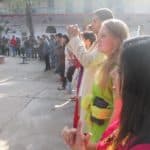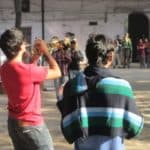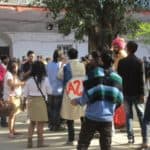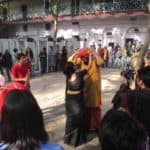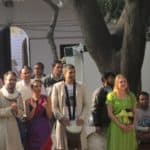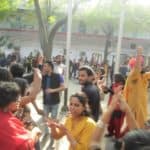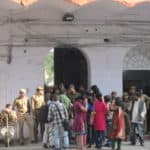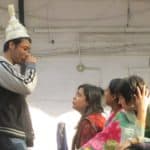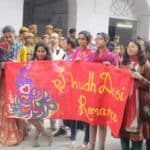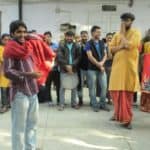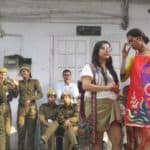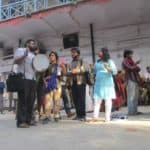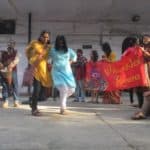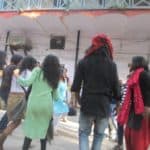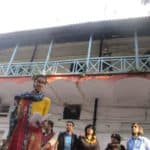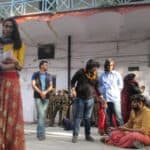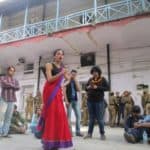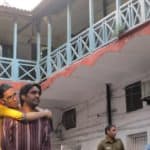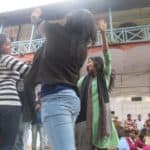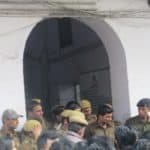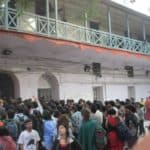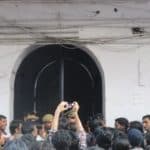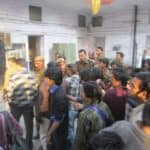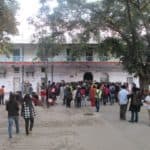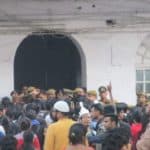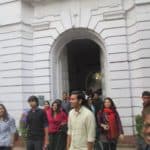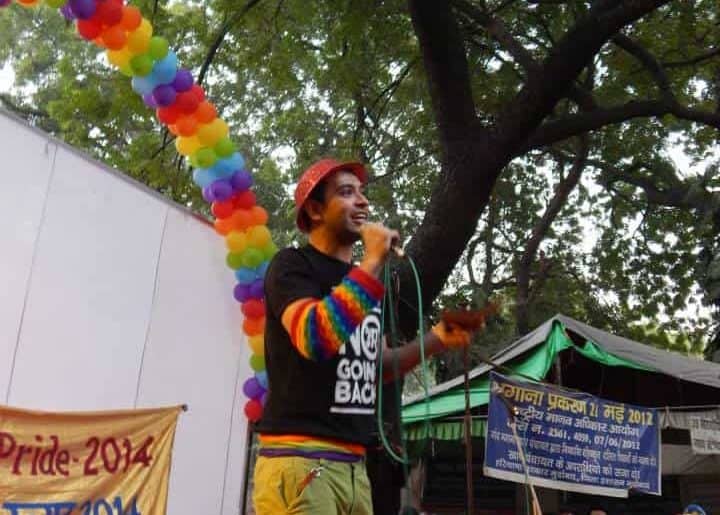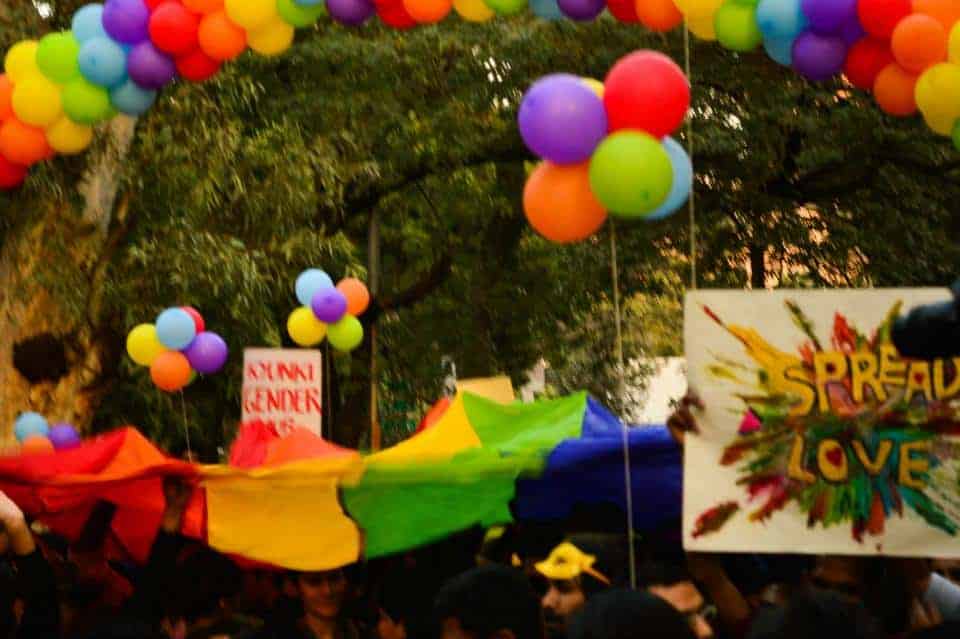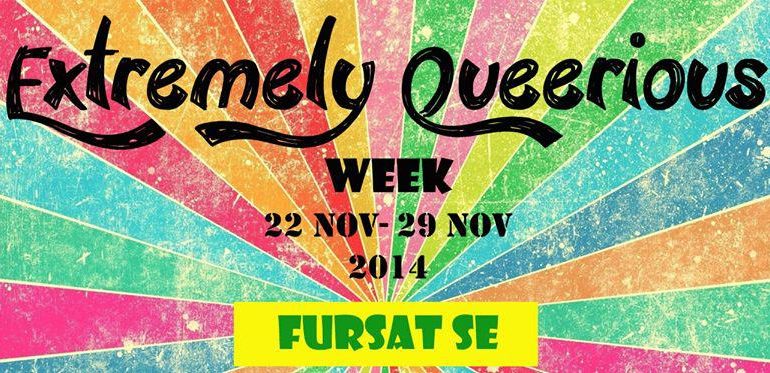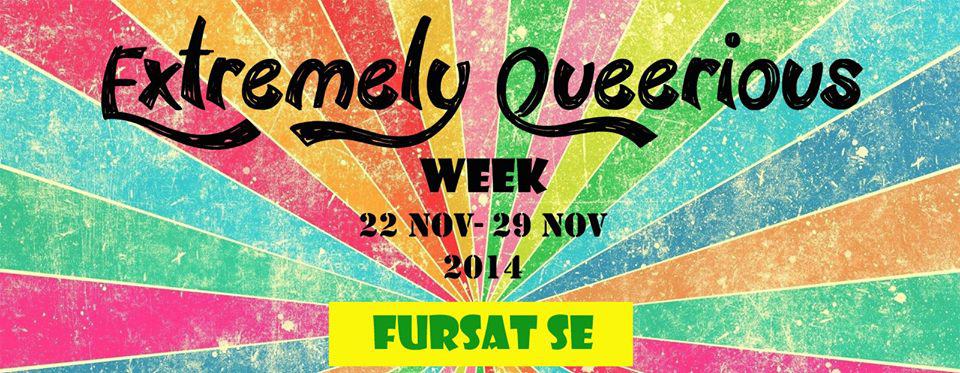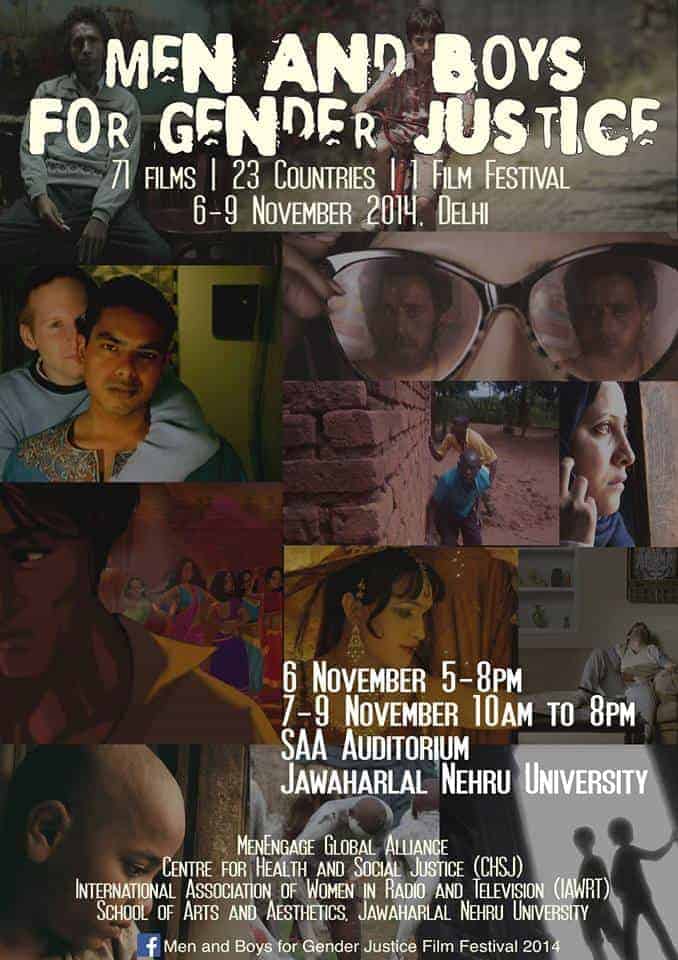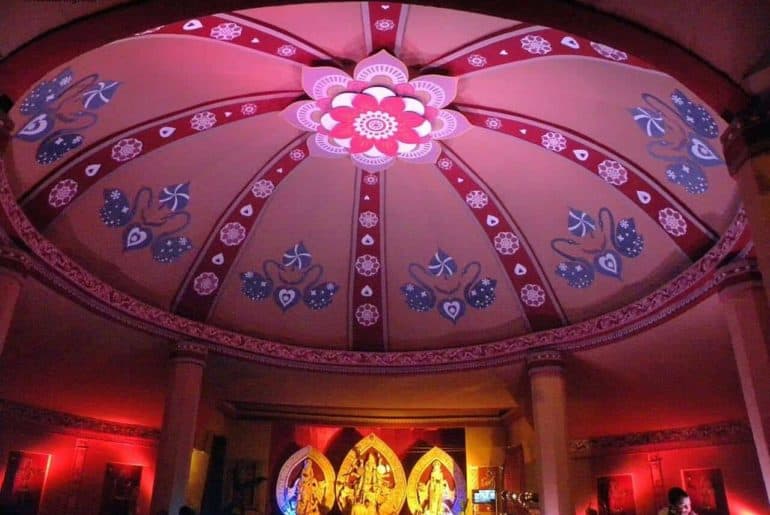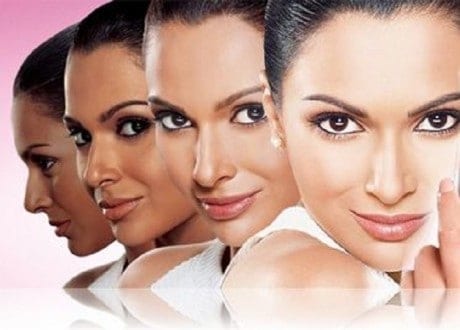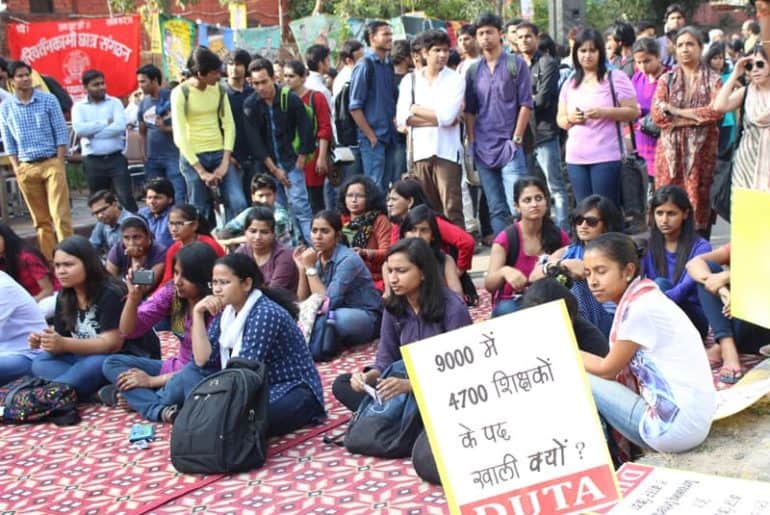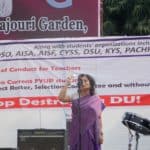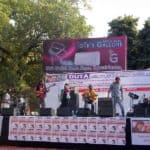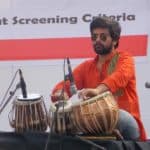An ex-DU student himself (Sri Venkateswara), Manak Matiyani is a queer feminist activist working as a trainer and consultant on issues of gender and sexuality with a focus on youth development. He has been part of the Delhi Queer Pride Committee since 2012. Manak led the Must Bol campaign and has conducted many trainings with young people on campus with various colleges in Delhi University to address issues of gender, sexuality and violence towards prevention or violence and acceptance of diversity.
The part 1 of the interview series is available here.
A lot of people inside the community are of the view that events like this started off as being tailored for the western Queer movement and transporting them to the South Asian context only serves to alienate the non-Queer identifying mass from the Queer. What are your views on this?
I don’t agree much with that. I think that people who think of it like that perhaps have only stonewall and not a dandi march in mind when they say that. I’m not trying to conflate those two marches but I think that Pride marches in India have their own history and relevance. And they follow in the tradition of public protest using art and culture that has been the way of many people’s movements and resistance struggles in India and across the world. So to equate it with one kind of a Pride march which one sees most prominently in western popular culture would be very unfair.
There is no denying that the Pride march is also perhaps the biggest Queer event for many cities in India. And this year, for instance, we are talking about the NALSA and the 377 judgements, we are responding to cases of violence that have happened, we are also responding to the current political climate. In the last two years we have seen more families and friends joining in the Pride march.
Perhaps people still think of the Pride as something that only Queer people go to, but that is also changing as we are trying hard to reach out with the message that right to freedom and dignity cannot be seen as the concern of one section of the population. Everyone’s rights are being questioned and at stake.
I have not experienced Pride organising in any other city, but Delhi Pride is completely open to suggestions and re-tailoring. So anyone who feels that it has been implanted from the western movement is free and more than welcome to join in and help change whatever they think might be missing.
The sub-continent has its own indigenous gender-identity groups that are vastly diverse and different from those in the west. Isn’t it time that for major Queer-studies to finally emerge from the region that are not west-centric in their points of departure?
I agree with that. I think that in the last few years, academic institutions have been more receptive to Queer subjects in academia but the return of 377 is a barrier to free and open research on Queer themes as well. I know that the Ambedkar University offers the possibility of taking up Queer studies, but I’m not sure how many other universities make that option available and advertise it.
While there is an uncertainty around the implications of the law at the moment, there is also a fear of the ruling party and the upsurge of violence due to intolerance and hate.
The education sector itself seems to be moving towards an “Indian Culture” lens in academics and that narrow reading of culture leaves out, in fact, actively opposes sexuality rights and queer identities. This, in a context where there is a heavy focus on vocational studies, skill training and where arts education is perhaps the least lucrative. So a whole bunch of things are required to support academic engagement with queer studies whether west centric or not.
I am not the most competent person to talk about academic engagement with queer studies. My work is more in the development sector and activism and both those arenas have addressed the specific cultural identities and practices in South Asia. This is a complex subject as class has a lot to do with how people identify as well and for the more upper class and educated lot, the points of reference even to assess and assert one’s own identity are more readily available in the west.
HIV AIDS work has been a big arena that has allowed conversation about more cultural ways of identifying and brought them into the way we understand Queer identities.That is the reason why the alphabet soup of LGBT expands in India to include IHKQ and could go on and on further.
Many people have used the HIV intervention space to take up more critical and nuanced work on understanding Queer identities of trans* groups, hijras, kothis. There is still a dismal lack of work with people who were assigned female at birth, particularly F2M trans* people. So it’s not just an easy west-east divide, there is class, caste, gender, so much at play in what gets the research/project grant and what does not. It is complex and that is why community spaces like the Pride march need to work harder to bring all these narratives to a public arena.
The Queer movement in India is still a very urban phenomenon. How can we bring it to the rural belts where casual same-sex acts are both frequent and looked down upon?
Just like in the case of “Indian Culture”, there cannot be a narrow and straightjacketed understanding of Queer movements. This is also why we usually say Queer movements as it is not a single unified movement. They intersect in many places and have common grounds and agendas, but many agendas are different and there are diverse positions. There are many movements, the urban ones are more visible, particularly to those residing in the cities, but it is not like they do not exist outside the urban areas.
The pride march may be called a largely urban phenomenon. However, I have met people who come from nearby towns and even villages to participate, or just be in the space to look at what is happening. I also think that same-sex desire and acts are much more accepted in the rural areas where they are part of some kind of hidden, but understood culture. And there is a difference between accepting same-sex acts and accepting Queer identities.
There is a general understanding that it is very difficult to talk about sexuality or gender or sex in rural areas. This is just plain wrong. Women’s movements and women’s groups and organisations have been doing it for years. Sexual and gender diversity has existed in rural areas for years. Conversations might be difficult to start and have to be handled carefully and with sensitivity to the cultural context but they are already happening. Of course more could be done as in the case of the movements and Queer organizing in the urban areas. But there is no easy quick-fix solution. The need is to create initiatives and programs that address a variety of realities and recognize that Queer people are perhaps sometimes more vulnerable because of their class or caste or gender, than because of their sexual orientation. I work with young people and the biggest successes in my work have been where the youth from communities are empowered with knowledge and with skills to understand and take up these issues in their own communities. Community based and community led interventions are successful and the key is to not infantalise rural communities or feel that others can go in, teach and solve “their” problems.
While the NALSA judgement was a big win for the movement, the Supreme Court judgement on section 377 came as both a shock and a disappointment, especially with the last Pride preceding it by only a few weeks. What’s the status right now?
The Naz case is still on and we are waiting for the curative petition to be heard. Meanwhile we are also appealing to the government to take action. If the Supreme Court has passed the Buck, then the government which claims to be for serving the people must act for ensuring rights. They have come with a large majority, now is the time to take positive action.
The NALSA case has been seen generally as a positive step, though the nuances of how to implement the orders are yet to be worked out. The government has also sought some clarifications and we are all waiting to hear more.
There have been analyses of both judgments from lawyers and activists that lay out a range of issues. Anand Grover, the lawyer involved in both the cases, has spoken about the NALSA judgement as a positive step and one that can strengthen the case on 377.
It is really disheartening to see that despite this kind of a positive stance by the court, the state and the police continues to inflict brutal violence on transgender persons. There have been cases of sexual and physical violence against hijra persons in police custody and this recent case of the Karnataka Police using the beggary laws to even drag hijras out of their homes and send them to a beggars colony by force. This shows how deep-seated the prejudice is, not just in the minds of people, but also in discriminatory legal and administrative systems that we continue to hold on to for no reason.
The current government has been talking a lot of doing away with some laws that are irrelevant, I hope they begin that list with the laws that are not just irrelevant but also oppressive and unjust. In a democracy, laws should give more power to the people and not to the state. We are seen to be claiming the mantle of the largest democracy in the world but heading in the opposite direction. We can only hope that the situation improves and continue to voice ourselves in and outside the courts to bring these changes.
The Pride this year talked about both these cases. Celebrating the positive move with the NALSA case and protesting the roll back on rights with the re-installment of section 377. We also feel that there is a need for a larger anti-discrimination policy and legislation as various laws are used to oppress LGBTIHKQ people and a systemic and structural approach is needed to counter this vulnerability.
There has been a surge in Queer representation in the country, however pitiable it might be, be it in literature, cinema or on the TV. More and more Queer-identifying artists are coming up and out and online platforms like the Gayzine and individual blogs are giving new release to young voices. Is ‘popular art’ proving to be an apt tool to ‘normalise’ Queerness in the public eye? Won’t ‘normalising’ the Queer take away that space from the non-conforming to exist in solidarity with each other? Is assimilation the goal?
This is a significant question for the media and also for the Queer community. Very often I find gay men ranting about why they are clubbed with hijras. There is this popular imagination of an aag ke phere laga ke, double income bank job couples and happy upper-class couple celebrating gay karwachaudh. There is no problem with this picture until it is thrown at all of us and we are told that we must aspire to this. What I’m trying to say is that for me, a pillar of the Queer movement must be to question the creation and imposition of all kinds of norms and create space to acknowledge, accept and celebrate difference and diversity. There are of course different strategies to get there.
Satyamev Jayate had an episode on homosexuality, which I feel was great and very well done. However, I also agree with its critique which said that this kind of middle class aspirational family life is not the only kind of Queer life that people have or people want. So we need a proliferation of media images and narratives. Now I feel that a one-hour episode can only get into a limited degree of complexity if it has to reach out to a diverse and mass audience. In that, I think what the show achieved was great. It said to people that your children are different, but they are not wrong. So get your act together and support them. And that is a fabulous and a much needed message.
I am seeing that while the mainstream media chooses to stick with certain ideas of what the audience might or might not like, the alternative platforms online, events, art platforms etc are giving us a much more nuanced and much more diverse images and insights into how people live, relate to each other and experience the world. This is changing the way we think about people in general and not just about Queer people. And it is important to remember that, particularly when we think about fitting into one narrow idea of what is a good citizen or a good boy/girl.
To not expect Queer people to assimilate and become invisible by not talking about their relationships, not dressing the way they want, not changing the way their bodies move and so on, because it does not fit a homogenized and rosy idea of what a gay person “should” look like.
So assimilation is not the goal. But this is a question for all of us within the Queer community to ask ourselves as well and not just to the media that picks and chooses certain images and people to highlight. I ask this question every time when someone says that the Pride march should be more “decent”. Or that people should not be too “loud”. Every time when a gay men’s party says dressing in drag or hijras and trans* people are not welcome. So it has to be both a reflective question for ourselves, not just in political but the so called “fun” spaces as well. And it also must be the call we make to the public.





